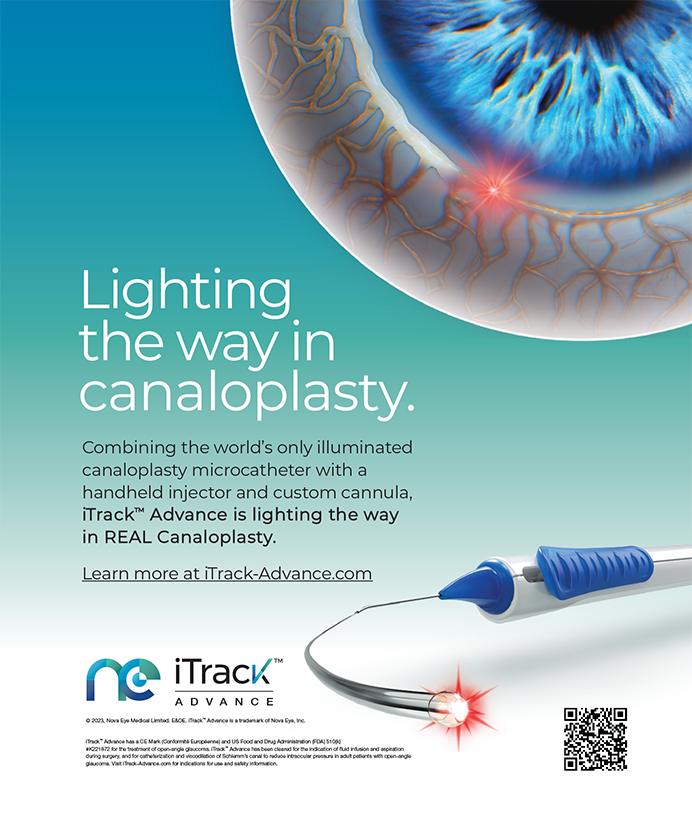Are patients as comfortable after surface ablation as they are after LASIK during the early postoperative period? Not quite, but the former is causing less discomfort than in the past. Surgeons' ability to reduce patients' postoperative pain has been one of the driving forces behind the steady growth of this alternative form of laser correction in the US during the past 4 years. According to Market Scope LLC (Manchester, MO), one of every six excimer laser refractive surgeries performed in the US is a surface ablation.1 Several strategies have helped make this surgical option more appealing to patients.
PREVENTIVE MEASURES
Additive Approach
Surgeons can choose from several different additive interventions to reduce patients' discomfort after surface ablation. The treatments can be administered before, during, or after surgery.
Preoperative Interventions
Treating patients for dry eye preoperatively can prevent postoperative pain and delayed epithelial healing. I have found that placing punctal plugs and starting patients on cyclosporine ophthalmic emulsion 0.05 (Restasis; Allergan, Inc., Irvine, CA) can create a healthy volume of tears and prepare the ocular surface for surgery.
Anecdotal reports suggest that predosing patients with topical or oral nonsteroidal anti-inflammatory drugs (NSAIDs) or oral prednisone reduces postoperative pain, but more studies are needed to verify these findings.
Intraoperative Interventions
Surgical techniques can significantly impact the severity of postoperative pain. For example, I have found that LASEK patients may experience more pain if the dilute alcohol used to loosen their corneal epithelium leaks onto and irritates their conjunctivae.
An intraoperative intervention reported to reduce postoperative pain dramatically is "icing" or chilling the cornea. Daniel S. Durrie, MD, freezes a nonfragmenting sponge soaked in balanced salt solution and applies this "popsicle" to the cornea for 10 seconds before and after the laser ablation.2 Bruce Larson, MD, instills partially frozen balanced salt solution onto the corneal surface just before removing the corneal epithelium.3 Regardless of the method, chilling the cornea helps reduce postoperative pain.
Applying a bandage contact lens at the end of the procedure also appears to make a difference in patients' pain levels. In my experience, placing an Acuvue Oasys silicone hydrogel contact lens (Vistakon, Jacksonville, FL) on patients' eyes works well, but I am not aware of any comparative studies to support my observation.
Postoperative Interventions
If used on a limited basis, diluted or full-strength topical tetracaine may relieve moderate-to-severe eye pain without causing adverse events such as delayed corneal healing. Recent research has primarily focused on topical NSAIDs, however. To date, the FDA has approved two topical NSAIDs, Acular LS (ketorolac tromethamine ophthalmic solution 0.4; Allergan, Inc., Irvine, CA) and Voltaren (diclofenac sodium ophthalmic solution 0.1; Novartis Ophthalmics, East Hanover, NJ), for the treatment of ocular pain after surface ablation. Xibrom (bromfenac ophthalmic solution 0.09; Ista Pharmaceuticals, Irvine, CA) and Nevanac (nepafenac ophthalmic suspension 0.1; Alcon Laboratories, Inc., Fort Worth, TX) are approved for pain reduction after cataract surgery, but some surgeons use these agents off label in their refractive surgery patients.
Several studies are currently underway to determine (1) which of the available NSAIDs controls pain most effectively, (2) the risk factors associated with these agents, and (3) whether the drugs' safety profiles differ significantly. Phase 3 studies of Acular LS and Voltaren showed that both agents significantly reduced patients' postoperative discomfort without delaying epithelial healing.4
According to the preliminary results of a multicenter, masked, contralateral eye study, Acular LS and Xibrom had similar pain-relieving and safety profiles.5 Although participants reported similar pain scores in two head-to-head comparisons of Acular LS and Nevanac, studies investigating the use of the latter after surface ablation suggested that using this agent for more than 3 days or instilling it directly on the stromal bed prior to the bandage contact lens' placement can lead to delays in epithelial healing as well as early corneal haze.6-8 Other studies, however, found that Nevanac did not delay epithelial healing when used for less than 3 days and when placed in the eye only after the application of the bandage contact lens.9,10 Investigation into the use of this drug is ongoing.
PROGRESS REPORT
Interventional techniques such as treating dry eye, administering oral and topical medications, applying diluted tetracaine and topical NSAIDs, applying a bandage contact lens, and chilling the cornea intraoperatively can improve patients' comfort significantly after surface ablation.
William B. Trattler, MD, is a corneal specialist at the Center for Excellence in Eye Care in Miami and a volunteer assistant professor of ophthalmology at the Bascom Palmer Eye Institute in Miami. He has received research support from Allergan, Inc., and Ista Pharmaceuticals, Inc., and he has received honoraria for lectures and consulting from Allergan, Inc. Dr. Trattler may be reached at (305) 598-2020; wtrattler@earthlink.com.


